Improve your health and feel at your best with compression socks. With footless compression socks, you can let your toes breathe while still getting the relief you need.
What are Footless Compression Socks?

Compression socks are specially designed socks that apply gentle pressure onto the legs. They come in various styles, including a footless one where they wrap around your calves. In essence, they can also be classified as compression sleeves.
Compression therapy has changed and advanced to become what it is today. They have become more appealing to the eye with fun new designs. They come in various colors and prints that are now available. They are also offered at various levels of compression for different needs.
Are you looking to incorporate compression socks to help you feel at your best? This guide outlines all that you need to know about these versatile and relieving footless compression socks.
The Benefits of Footless Compression Socks
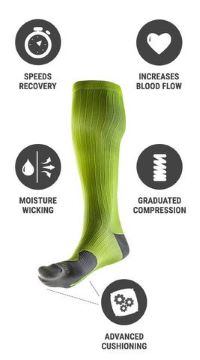
You may already know that compression therapy, specifically compression socks, bring a wealth of relief and value to your legs and feet. But what about those socks that don’t have the foot included in the sock?
Here we share some of the great benefits of compression socks as you consider which options are best for you and your feet and legs.
1. Preventing and Treating Various Circulatory Issues
Several circulatory issues that affect the legs and feet include edema, varicose veins, and deep vein thrombosis. Below is a more detailed explanation on each health problem and how footless compression socks can help treat them.
Edema
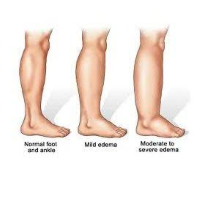
Edema is a term for swelling. Edema can affect any part of the body and is essentially fluid build-up in the tissues. It can often occur in the legs, ankles, and feet.
Peripheral edema affects the legs, knees, ankles, and arms. This type can be caused by sitting or standing for too long; dietary factors, such as eating food that has too much salt; hormonal changes during pregnancy; and having diabetes.
Peripheral edema presents symptoms such as swelling or puffiness of tissue directly under your skin. The skin also becomes stretchy and unusually shiny. With peripheral edema, when you press on the skin, an indentation remains, which is also called pitting. As a result of this, aching, discomfort and pain can develop.
Doctors recommend wearing compression socks as they create pressure on the tissues of the body which will help release fluid build-up. As swelling reduces, discomfort or pain will also reduce.
Varicose Veins
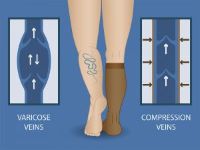
There are two main systems of veins in the body. The first is deep veins. As the name suggests, the deep veins are located deeper in the body. The second is superficial veins. These are found close to the surface of the skin and are more prone to a circulatory issue known as varicose veins.
Both veins contain one-way valves that are responsible for letting blood flow through by regularly opening and closing. If they fail to close, blood could pool backward into the veins, increasing pressure and developing into varicose veins.
If left untreated, these symptoms can do a lot of damage to the legs and feet. The skin will be the most affected as it will start to thin, eczema can develop and/or skin ulcers could form.
Compression socks do not cure varicose veins but they do manage the symptoms. Because of the firm compression they offer, these socks squeeze the walls of the veins which increases the pressure of blood flow. This reduces pooling in the veins which, in turn, lessens swelling, pain, and discoloration.
Popular Articles on ComproGear
Compression Socks for Nurses Best Nurses Compression Socks Knee High
Best Compression Socks for Sitting All Day Should I Wear Compression Socks if I Sit All Day?
Rose Toy for Women The Design Has Beauty
Compression Socks for Ankle Swelling Wear Pressure Socks to Stop Ankle Edema?
Deep Vein Thrombosis
Deep vein thrombosis is a condition where a blood clot develops in one or more of the deep veins in the body. This can be caused by genetics, treatments such as chemotherapy, lowered blood flow, among others. Symptoms include swelling, pain, warmth in the swollen area and discoloration of the skin.
Compression socks are great as they prevent the risk of forming blood clots in the veins by improving circulation.
2. Improving Athletic Performance

It is common to wear compression socks during exercise and are sought by gym-goers, runners, hikers, and other sports players.
These compression socks give extra comfort and help quicken the removal of lactic acid that had built up from exercise. They also help circulate blood better, which reduces soreness and speeds up recovery. Whether for better performance or to improve recovery following activity, compression socks can certainly come in handy.
3. Assists During Recovery from Surgery
Doctors often recommend compression socks as a recovery garment for after surgery. Following a surgery, a patient will need to rest, often laying down in a bed. He or she may not be able to move around often.
Compression socks ensure blood circulation is maintained and prevents blood from clotting. Even when physical movement isn’t possible, compression socks help the legs feel great and prevent any negative effects.
4. Maintains Proper Circulation During Travel
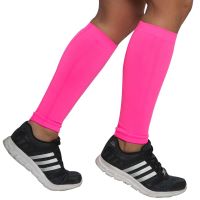
People who frequently travel, whether by airplane, bus, train or car, have to endure hours of sitting. Going for long periods with little to no movement can cause aches, sores, or even blood clots.
Compression socks keep blood flowing properly due to the pressure put on the legs. This pressure reduces the risk of blood clots and ensures that blood can always be moving throughout the body.
5. Provides Comfort and Promotes Leg Health

Compression socks provide comfort and promote good leg health. They can still be worn as daily wear, even without traveling or exercise involved. By wearing these socks, the legs and feet have good blood circulation. Those who are on their feet for much of the day can find relief and improved health by wearing compression socks.
Styles of Compression Socks
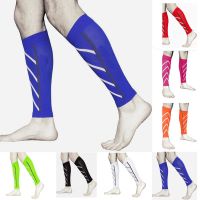
People may have different needs or preferences towards compression socks, to which manufacturers adapted to. Therefore, there is a variety of style on the market, with which some are highlighted below.
1. Footless
As the name suggests, these are socks that cover the leg up to the knee but do not cover any part of the foot. These footless socks are similar to sleeves that you might wear on your arm. However, these are specifically designed for the shape of the leg. Footless compression socks are often worn by athletes and people who may suffer from swelling that develops on the legs rather than the feet. These allow greater flexibility and breathing room for your feet without feeling any sort of constriction. They also may be easier to put on.
2. Knee-High
Knee-high compression socks reach just below the knee and often cover the leg and foot altogether. They are popular among runners, athletes, and nurses. They often come in colorful prints and patterns.
3. Thigh-High
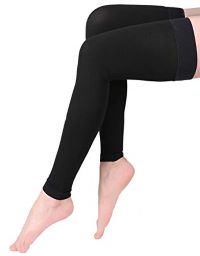
Another style of compression socks is thigh-high compression socks. Thigh-high compression socks reach up to the mid-thigh where an elastic band holds it in place. These types of compression socks are often worn by people who have deep vein thrombosis or have noticed swelling and varicose veins on their thighs.
4. Zippered
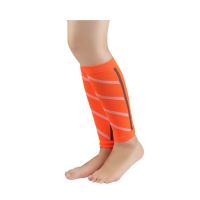
Zippered compression socks are similar to a regular compression socks, however they have a zipper added on the side. The zipper is to help make the sock easier to put on and take off. These compression socks are often worn by seniors who may struggle to put on compression socks, as well as patients with restricted movement.
Why Go Footless?
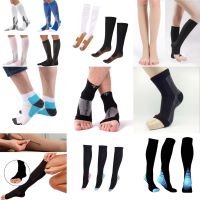
Compression socks with a footless option give the wearer whole new freedom without sacrificing proper blood flow.
If you enjoy giving your toes or feet air to ‘breathe’, especially during hot weather, then footless compression socks are the socks for you.
Going footless allows you to wear sandals, flip flops, and peep toes for more formal occasions. Footless compression socks are also good for diabetes patients because it makes it easier to inspect for injuries and bruises on the feet that they may not be aware of.
With footless compression wear, you will not experience any cramping and tightness in the toes, which can be bothersome to people with foot problems such as bunions, toenail issues or highly sensitive toes.
Buying Guide for Footless Compression Socks
If you’re looking to get yourself some footless compression socks, there are a few things to keep in mind. Use this helpful buying guide as a resources to find your perfect pair. With the right footless compression sock, you can take your next step to better health.
1. Consider the Material Composition
When choosing a footless compression sock, keep in mind that not all socks are created equal. Keep these points in mind when determining the type of material that is best for you.
- Take note of the fabric.
- Compression socks can be made of different fabrics including nylon, spandex, cotton, and many more.
- The material should feel comfortable to wear at all times. Therefore, ensure that a pair of compression socks do not irritate your skin.
2. Check the Type, Length and Sizing
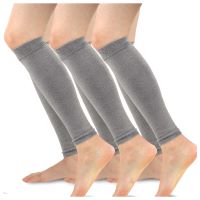
Look at the band around the ankle and the top of the socks. Footless compression socks do not cover the foot; they end just at the ankle.
When buying this type of compression socks, ensure that the ankle has a band to make sure that the compression level is as it should be.
Whether your compression socks end at the knee or thigh, it is important to ensure that there is a band at the top to prevent them from slipping down. The band should be secure and firmly sitting on the skin without bunching up or letting loose. This will make the socks feel much more comfortable as you wear them throughout the day.
Ensure that you get a fitting done by a professional. Like other forms of compression socks, you will need to have a professional fit you to ensure that you get the right size of compression socks.
The size of the sock matters. Wearing a size that is too small will work against circulation. Rather than helping blood flow circulate, it can prevent proper blood flow. Buying a size that is too big will do nothing for your blood circulation. There won’t be enough pressure put on your leg.
If you are buying online, then you can do the measurements yourself before buying the socks. As you make your purchase, make sure the size is accurate for your leg.
3. Confirm the Compression Level
When it comes to the compression level, it is best to seek advice from a medical professional. An expert will help determine which level of compression is needed to treat your symptoms. Buying a compression level that is too high will do the opposite and instead cut off blood circulation. On the other hand, buying a pressure level that is too low will do nothing for your symptoms which puts you at more risk.
Refer to the table below to understand the various compression levels, which is measured in ‘millimeters of mercury (mmHg)’, available:
4. Choose a Design You Like
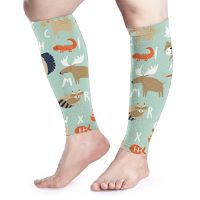
Footless compression socks now come in a range of design options. Color and pattern are entirely up to you.
Many people are able to find their type of compression wear in terms of style and color depending on what they need. Footless compression socks come in black and neutral body colors which are great for wearing under office attire. They also come in bright and colorful patterns, which make them more appealing and attractive, and goes against the notion that compression socks are ‘boring’.
Conclusion
Footless compression socks are like any other form of compression wear. However, the footless option provides freedom to the feet while still applying gentle pressure to the calves so you still get the proper circulation you need. They can help prevent and treat various medical issues, come in various styles, sizes, and compression levels.
